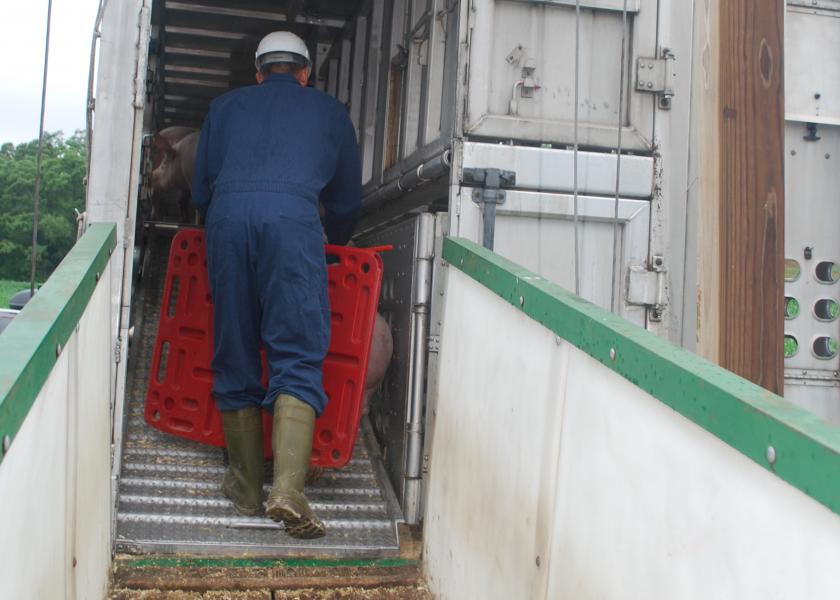4 Things to Consider When Handling Heavier Market Hogs

By Ella Akin, The Maschhoffs
Average market pig weights have continued to increase for the past several decades. The recent pork packing plant closings and reduced harvest capacity at commercial plants due to COVID-19 have resulted in a backlog of heavy market-weight pigs inside barns. This can create challenges for producers and considerations must be made in order to ensure animal well-being, while maintaining production performance. Here are four things to consider when moving heavier market-weight pigs.
1. Facilities
Although it can be challenging to change existing facilities, pen, alley and chute designs should be considered to support effective and efficient animal movement. Historically, alleys and chutes have been 24” to 32” wide in an effort to minimize wasted barn space. Current guidelines say alleyways should be 36” wide, while chutes should be 32” to 36” wide, allowing two market weight pigs to walk side-by-side. The problem is that several existing chutes are only 28” wide. One needs to understand pigs’ shoulder width in order to properly design facilities. If balking or handling difficulties occur, consider reducing group size or reducing forward handler pressure.
2. Animal Handling
As market pig weights increase, animal handling practices should be evaluated to ensure that animals can be moved in a low-stress manner and in accordance to industry animal handling guidelines. Positive human-animal interactions need to be established early through calm and quiet handling, proper use of the flight zone and point of balance, and appropriate use of handling tools. Consider reducing group sizes during movement to mitigate the risk of piling or balking. Handlers need to be able to control the lead pig and make adjusts when deemed necessary. Aggressive animal handling can lead to elevated animal stress and increased transport loss.
3. Stocking Density
Trailer stocking practices should also be modified as weights increase to ensure stocking densities remain within acceptable ranges. Failure to do so can have significant impacts on animal well-being and transport loss. Changes in stocking density need to be made to accommodate pig weight and/or weather conditions. For stocking density of a 275 lb. pig, the Transport Quality Assurance (TQA) Handbook recommends 4.57 square feet per head under normal weather conditions. In light of COVID-19, several states have issued Department of Transportation (DOT) weight waivers, allowing transporters to increase their total load weights. While increased load weights can improve transport efficiency, make sure target stocking densities are maintained.
4. Human Safety
Animal handling is a significant safety risk. The most common animal handler injuries reported in The Maschhoffs system are knee injuries from pigs hitting someone from a blind side or being twisted when they get caught between animals. Additionally, slips and falls can lead to a variety of injuries ranging from the back to the shoulder – this can occur after being hit and falling to the floor resulting in a back injury or when a person falls, they grab onto something on their way down, straining or tearing a shoulder. To avoid these injuries, minimize blind sides by working along walls or fencing and “let it go” – do not struggle with the pig as the result has a strong chance to negatively impact the animal caregiver.
Although market pig weights will likely continue to increase, producers must continually ensure animal welfare and human safety are maintained.
Ella Akin serves as a Health and Animal Care Associate for the Great Plains Region for The Maschhoffs.
More from Farm Journal's PORK:
6 Tips to Ease Market Hog Loading Stress
Superheroes of the Supply Chain: Truckers Keep it Moving
Value Your People and Labor Retention Will Follow







